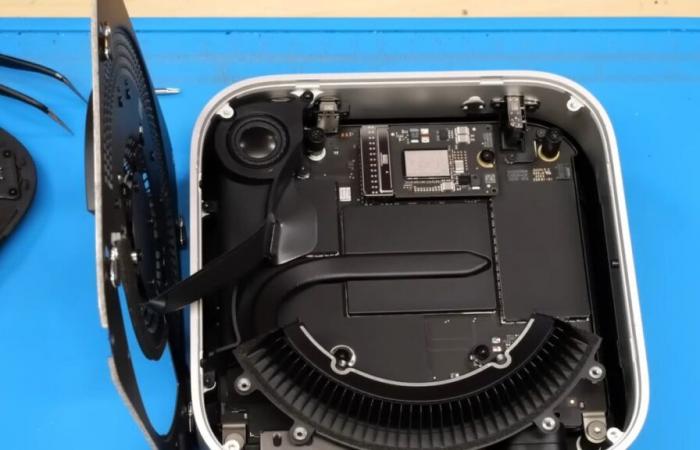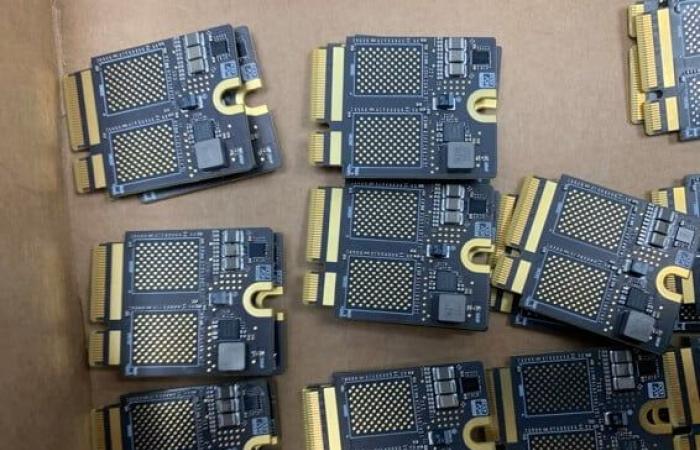The Mac Mini M4 hides a secret: its SSD is finally modular! But can you really upgrade it?
The new Mac mini M4 and its entry-level price, 699 euros, seems to be a banger. Understand by this, a product that we will certainly highly recommend. However, the problem is that there is only 256 GB of storage at this price: and it costs very, very expensive… 230 euros more to upgrade to 512 GB (yes, you read that correctly).
To go further
Apple Mac mini M4: the real problem is not its power button
But good news for new Mac mini M4. No more SSD storage soldered to the motherboard: disassembly showed the presence of removable modules.
This modular approach is not completely new at Apple, since it had already been observed on the Mac Studio 2022. But its arrival on the Mac mini, an entry-level machine, could mark a more global change in philosophy of the part of the apple brand.
Other good news: the 256 GB base model now has two 128 GB modules, compared to just one module previously. This provides significantly better read/write performance.
More…
But be careful not to declare victory too quickly. The opening is far from simple, it was not designed to be simple. A few people have already reported breaking components, such as the wire that connects the machine to the ignition button.
Furthermore, although storage is indeed modular, the reality of its use is much more complex than it seems. Indeed, the SSD controller remains integrated into the SoC (System on Chip), which makes a simple “plug-and-play” operation impossible to increase the storage capacity.
The most daring tinkerers have already managed to upgrade to 2 TB, as demonstrated by certain videos on YouTube. But these manipulations are more of a technical feat than a real practical solution: they require advanced skills and void the machine’s warranty.
YouTube link Subscribe to Frandroid
This content is blocked because you have not accepted cookies and other trackers. This content is provided by YouTube.
To be able to view it, you must accept the use carried out by YouTube with your data which may be used for the following purposes: allowing you to view and share content with social media, promoting the development and improvement of products from Humanoid and its partners, display personalized advertisements to you in relation to your profile and activity, define a personalized advertising profile, measure the performance of advertisements and content on this site and measure the audience of this site (find out more more)
By clicking on “I accept all”, you consent to the aforementioned purposes for all cookies and other trackers placed by Humanoid and its partners.
You can withdraw your consent at any time. For more information, we invite you to read our Cookies Policy.
I accept everything
Manage my choices
For us, the advice therefore remains unchanged: it is better to choose the storage capacity you will need when purchasing, even if the pill is sometimes difficult to swallow. Or otherwise, use external Thunderbolt SSDs.

A glimmer of hope, however, comes from third-party projects like Studio Drive, which develops compatible storage solutions. But these initiatives still remain marginal and reserved for the most adventurous users.








